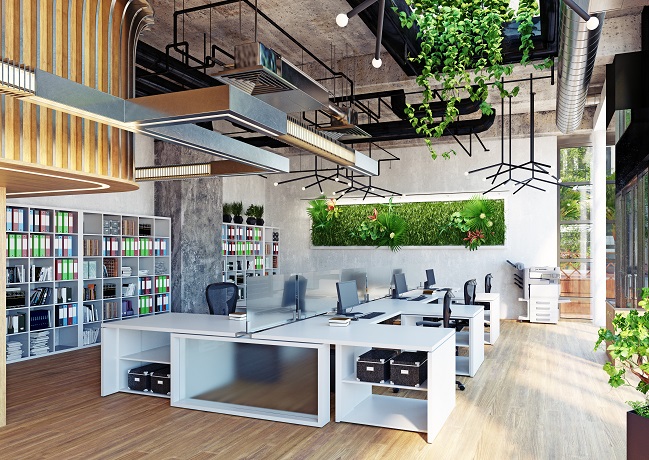Ironically, just as offices are turning into ghost towns due to coronavirus concerns, we’re at a point in time at which the focus on developing buildings that promote healthier people has never been higher.
Scarcely a month ago, the International WELL Building Institute (IWBI)
announced that it had passed a milestone in its mission to “help people thrive through better buildings and communities and stronger organizations.” That is, the company has registered and certified more than 500 million square feet of buildings under the WELL Building Standard (WELL).
At this point, real estate/facilities planners, architectural firms, office designers, and people managers should be well-aware of IWBI and WELL. But for those readers who aren’t… WELL is a global rating system that focuses on the ways that a building as a whole and each of its piece parts can “improve comfort, drive better choices, and generally enhance, not compromise, our health and wellness.”
As a testament to the growing interest in creating healthy spaces, IWBI noted that it received registration for nearly four times as many WELL projects in 2019 as it did in 2018. As Rachel Gutter, IWBI president, shared in the press release, reaching 250 million square feet took WELL four years since entering the market in 2014… but only a year to double that. “While that’s a potent market signal, it really reflects an unbelievable rise of a dedicated community around the world that is committed to investing in health,” she said in her prepared statement.
That 500 million square footage represents 4,000 projects in nearly 60 countries, reported Rick Fedrizzi, IWBI chairman and CEO, in the press release on the milestone. Offices, of course, are just some of the spaces seeking WELL Certification, but of the most interest to us here at WorkSpace Connect. So, what does a WELL-certified office comprise? Here’s an example from Australia, shared in a recent IWBI
case study.
WorkSafe Victoria, a health and safety regulator, made workplace well-being a chief consideration when planning for a headquarters relocation, Matthew Ivezic, WELL AP and property project manager at WorkSafe Victoria, shared in the case study. Three highlights are:
- Active furnishings — all desks feature electronic sit-to-stand capability and adjustable dual monitors
- Increased ventilation — toxins removed for improved indoor air quality
- Sound barriers —privacy available in meeting rooms and designated quiet spaces, and sound-absorbing materials prevent echoes
These represent just a sampling of the nearly dozen umbrella concepts encapsulated in the WELL Certification. Among the many other features you might find in a WELL-certified space are the sort of mindful spaces WorkSpace Connect contributor Kay Sargent, of HOK, described
here and
here; access to nature; promotion of cycling or walking to and around the workplace; public spaces for gathering, socializing, and collaborating; circadian lighting design and glare control; access to healthy food and the ability to prepare meals onsite; availability of drinking water that meets contamination limits and without unpleasant taste, smell, and look; and many more.
Whether or not the wellness features a company embraces is immediately recognizable or not, employees will no doubt appreciate the efforts undertaken on their behalf. As WorkSafe Victoria’s Ivezic noted, “One of the best results that came out of achieving WELL Certification was educating our staff about the impact the work environment can have on mental and physical health.”
As workers return to offices post-coronavirus clearance, I would imagine features such as proper ventilation, ready access to fresh air, and individual food prep capabilities would be top of mind for many of them. Is your organization doing enough to assuage their concerns? Which healthiness and well-being principles has your organization addressed? Which would you like to see it address? Share in the comments field below!






